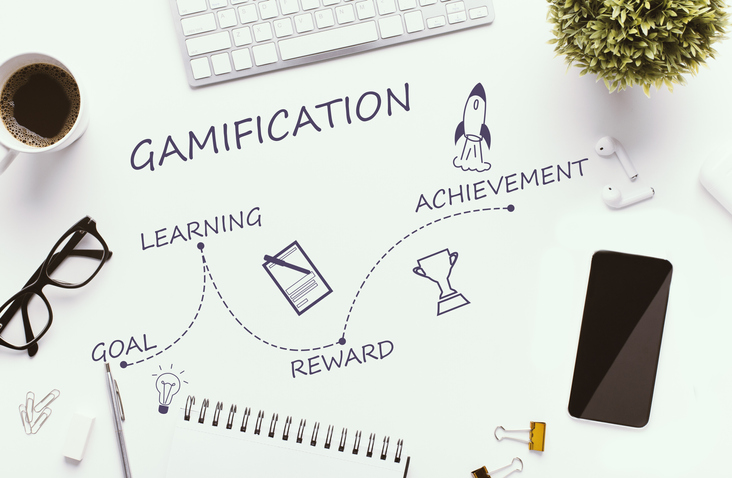 Gamification is a recent phenomenon that helps to turn often dull or tedious tasks into games by using mechanics that engage the user. It doesn’t mean that work becomes an actual game, but having a system based on a reward system can help engage employees and make them more motivated. To make work increasingly fun, add gamification to your workplace today.
Gamification is a recent phenomenon that helps to turn often dull or tedious tasks into games by using mechanics that engage the user. It doesn’t mean that work becomes an actual game, but having a system based on a reward system can help engage employees and make them more motivated. To make work increasingly fun, add gamification to your workplace today.
How Gamification Works: Mechanics
When you got your first job, the concept of getting your paycheck was exciting. You immediately thought about the freedom that money afforded you. Then, you received your next paycheck, then another, until you stopped getting excited about your earnings. Unless you get a promotion or increase your wage, your brain won’t respond after receiving the same stimulus constantly.
For gamification to work, the rewards have to increase in intensity after a task becomes a habit, which is why video games are so compelling. When you level up, you receive skills, better stats, and access to better equipment or more locations. So, how do you mimic that in real life?
In his book Loyalty 3.0: How to Revolutionize Customer and Employee Engagement with Big Data and Gamification, gamification pioneer Rajat Paharia explains the 10 key mechanics for gamification to work. Businesses can use employee engagement technology, like Nectar, to complete the following tasks and chart progress with digital rewards, peer-to-peer recognition, and challenges.
- Fast feedback: Managers must respond quickly to a completed task.
- Transparency: Employees must be aware of the awards given for the task.
- Goals: Employees or managers need to set goals all are capable of reaching.
- Badges: Managers must give out virtual or physical plaques as a reward.
- Leveling up: After a set amount of badges are earned, they level up for better rewards.
- Onboarding: Keeps all works informed on how the gamifying process works.
- Completion: When employees or managers complete a task, it’s removed from the list.
- Collaboration: Teams need to work together to solve and complete complex tasks.
- Community: All employees and managers need to be on board with this process.
- Points: Points can be used to move to the next level or to receive rewards.
For years, game designers have known how data can drive user interaction, which is what gamification is at its core. It doesn’t mean employees will start playing on their phones or become distracted; the objective is to increase performance and productivity through data.
Benefits and Implementation
Here are some of the reasons you should consider gamification — and how to go about it.
Benefits of gamification. One of the biggest advantages of using gamification is it removes the fear of favoritism. With appropriate engagement software, employees can see how they stack up against their co-works and see how rewards are given out. Gamification makes work more enjoyable, as it removes this stress and also gives employees a goal to strive toward. With real-time feedback, employees understand how to meet their targets and why they aren’t succeeding.
Industries suited for gamification. Any industry that uses easily measured outputs can benefit from gamification. For example, a business that sources candidates for recruitment could simulate a potential hires work environment on the computer to weed out unqualified potentials quickly.
Also, training can become more fun with the use of quizzes to reinforce policies and company culture. Company culture in all sectors can also grow if employees are given goals and rewards.
Implementing gamification. The following steps should help all industries implement gamification in their companies:
- Hire or delegate a professional that’s responsible for creating rules and criteria appropriate for the workplace. Engaging metrics will help streamline gamification.
- Approach an IT professional with the opportunity to get certified in gamification.
- With your team, locate where problems are occurring in your company. Then, the gamification professional can create a game around alleviating those issues.
Some industries don’t require a technological solution to gamification. For example, recruitment staff, like HR, could set up table-top games that encourage trainees to fight through a zombie apocalypse. As they get further in the training process, they kill more “zombies” and earn more points that could transfer over to other games within the office space.